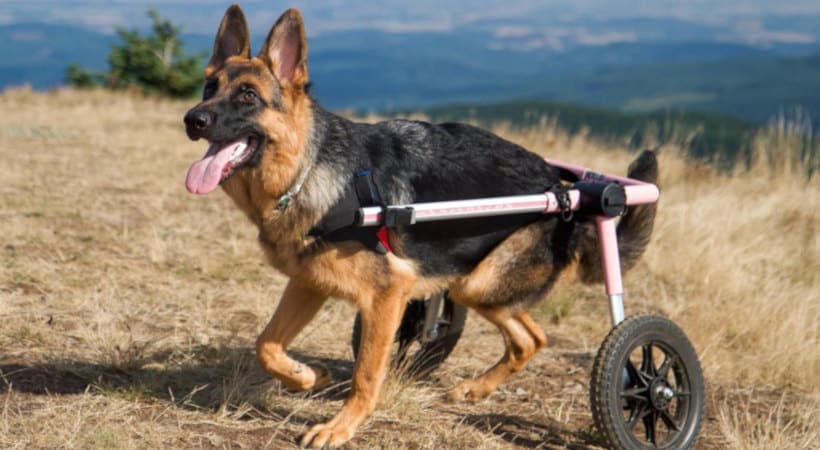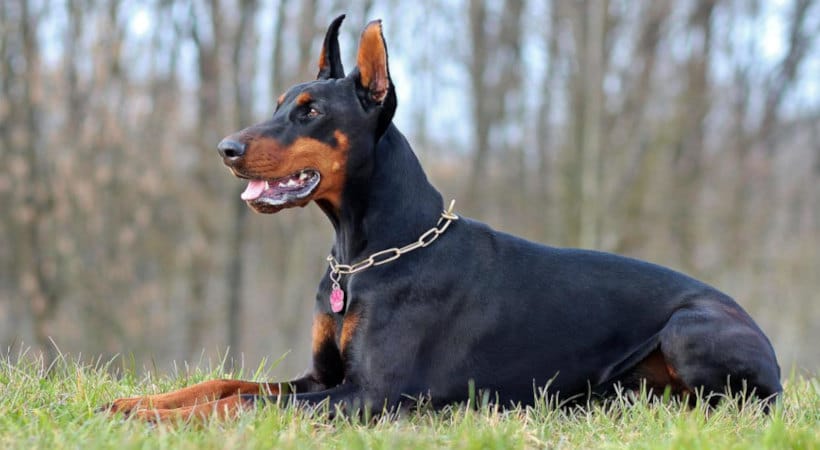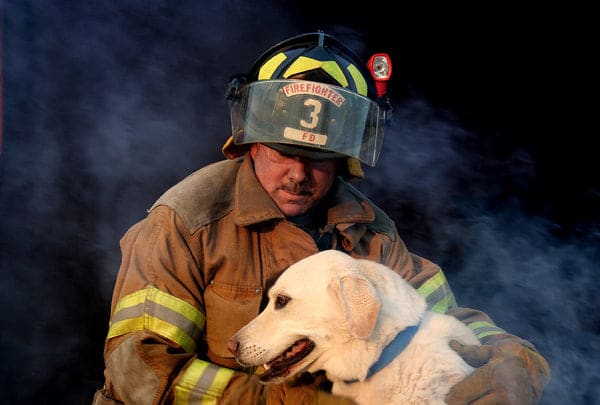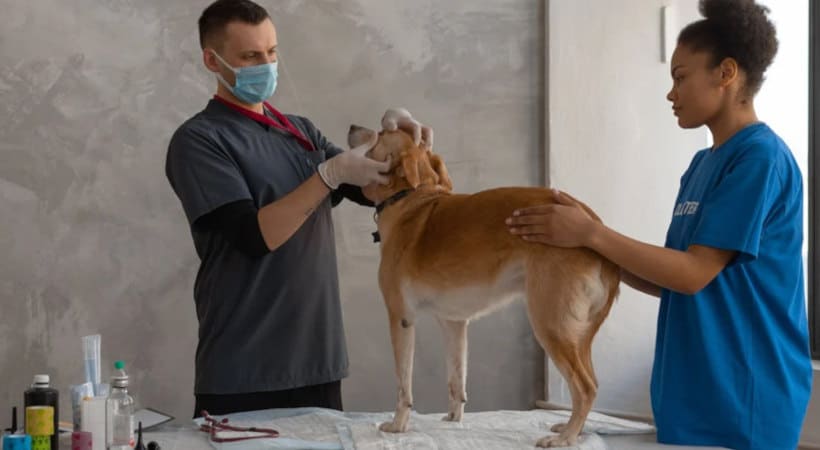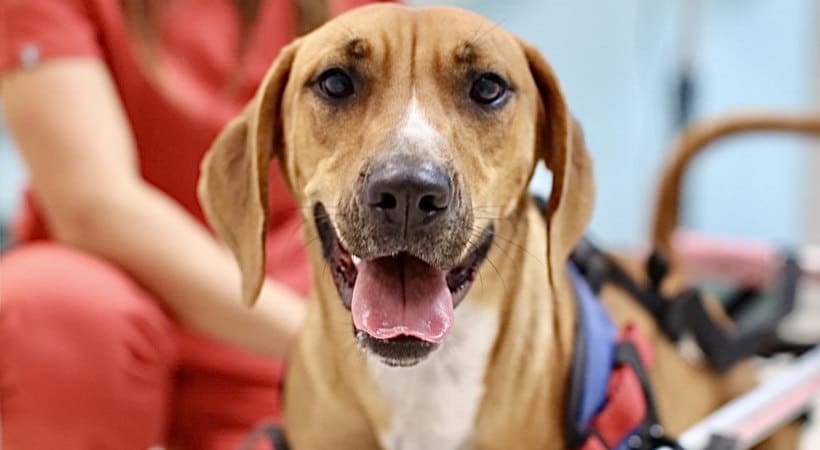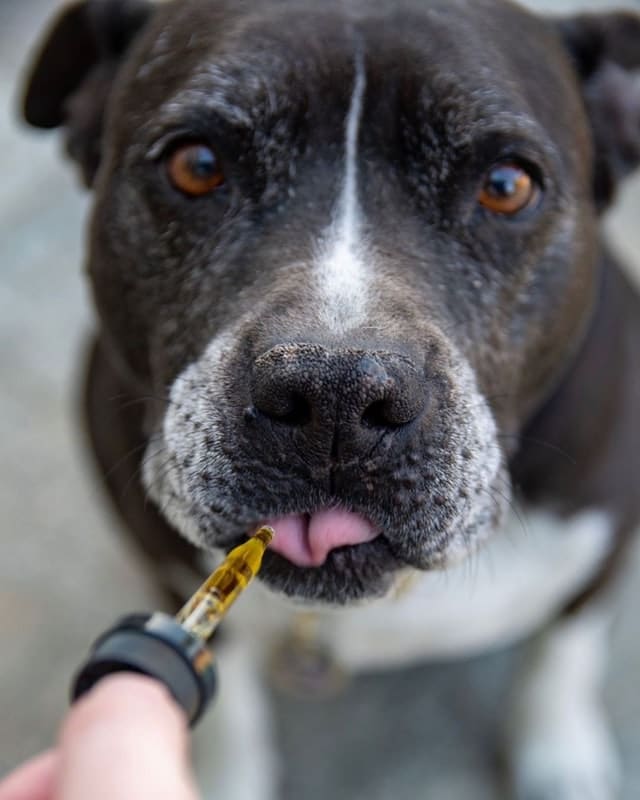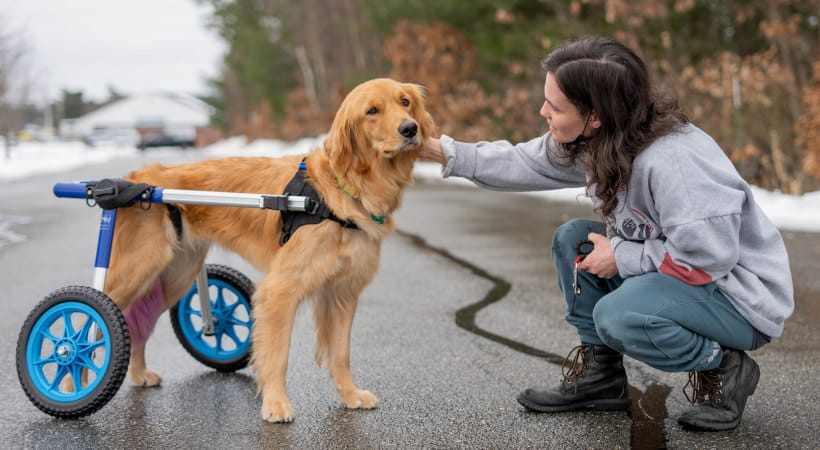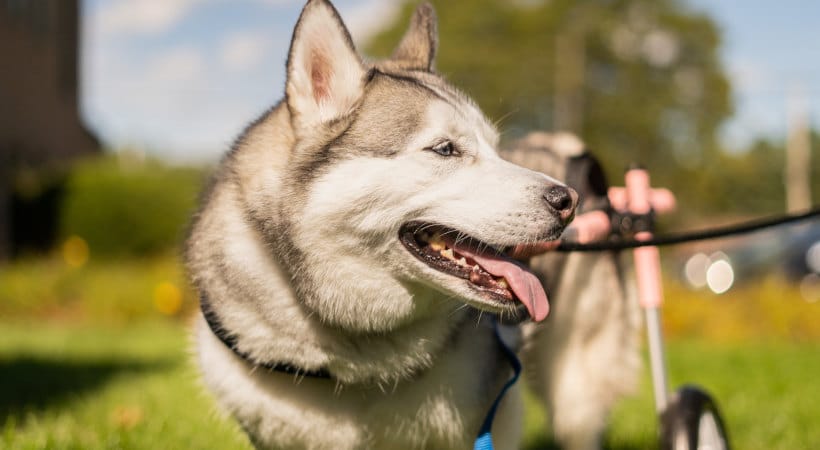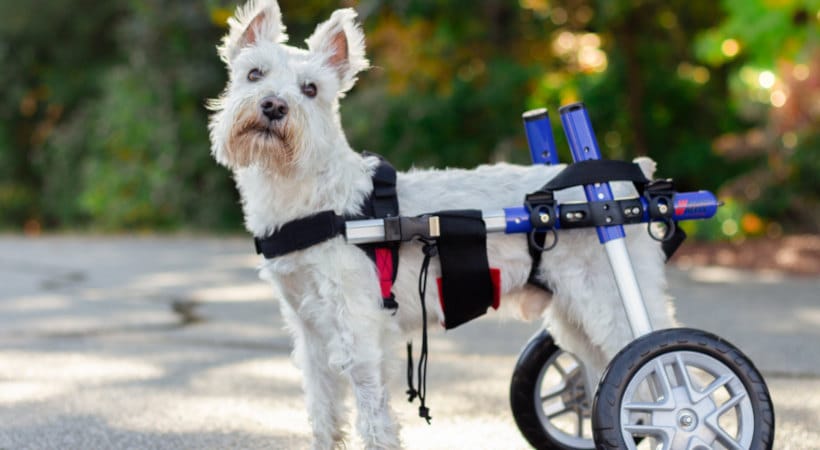Degenerative Myelopathy and IVDD each influence a canine’s mobility, however the two circumstances are very totally different.
IVDD in Canine Defined
Intervertebral Disc Illness (IVDD) is a genetic spinal situation that causes a canine’s spinal disc to dry, grow to be calcified, and rupture. Canine breeds with lengthy our bodies and brief legs are extra vulnerable to IVDD. The situation is prevalent amongst dachshunds, the place the illness impacts 1 in 4.
When a canine’s spinal disc herniates, it may be painful. Some canines with IVDD will cry out in ache, out of the blue unable to maneuver their hind legs. Different canines will exhibit ache via a hunched again, shaking, and even aggression when touched.
Understanding Degenerative Myelopathy (DM)
DM is a progressive, hereditary situation that impacts a canine’s spinal wire. The situation is much like ALS in people. Canine with DM will expertise limb weak spot and paralysis. Though DM progresses at totally different charges in each case, the mobility loss will happen over a number of months to a yr. Train has been proven to decelerate the development of DM, and a wheelchair is the important thing to holding canines with Degenerative Myelopathy energetic.
The Similarities Between DM and IVDD
- IVDD and DM are genetic circumstances, that means that each circumstances may be inherited and handed on to future generations if breeders aren’t cautious.
- Canine with Degenerative Myelopathy and IVDD can expertise mobility loss and lack of power of their legs.
- Bodily remedy can profit canines with both situation.
- A canine wheelchair is usually beneficial for canines identified with IVDD or DM.
Walkin’ Wheels Wheelchair View Product Walkin’ Elevate Rear Harness View Product vertebraVe Canine Again Help View Product
How DM and IVDD Influence a Canine’s Mobility
Though mobility loss is frequent in IVDD and DM, the 2 circumstances are very totally different. Let’s be taught concerning the variations between Intervertebral Disc Illness and Degenerative Myelopathy and their results on a canine’s capability to stroll.
Rear leg perform loss is frequent with IVDD and DM, however the expertise could be very totally different. Most instances of Intervertebral Disc Illness begin with a sudden cry in ache and quick lack of mobility within the again legs. Because the disc rupture heals and the canine begins to get well, leg perform can return. Paralysis from IVDD may be everlasting, relying on the rupture’s severity and remedy.
Degenerative Myelopathy is a progressive mobility situation. In its earliest stage, canines will present indicators of shedding power of their again legs and dragging their paws. Canine with DM will expertise worsening mobility loss because the situation progresses. Every stage of Degenerative Myelopathy will proceed to weaken the canine’s legs till they grow to be totally paralyzed.
Incontinence in Canine with IVDD or Degenerative Myelopathy
Lack of bladder management and fecal incontinence can happen in lots of canine mobility circumstances; IVDD and DM aren’t any exceptions. The principle distinction between the 2 circumstances is when incontinence points start.
IVDD incontinence happens instantly when the canine first turns into paralyzed. Though not each canine shall be incontinent, some canines with IVDD could not be capable to pee and poop on their very own. In consequence, their caregiver should manually categorical the canine’s bladder many occasions all through the day to assist their canine pee. Canine diapers and male wraps could also be worn inside the home to forestall accidents and maintain them dry.
Incontinence points in Degenerative Myelopathy develop ultimately phases of the illness. Most DM canines will lose management of their bladder and bowels in end-stage DM, which may begin a couple of yr after the preliminary prognosis.
Is there a treatment for both situation?
The remedy choices and consequence are among the many most vital variations between Degenerative Myelopathy and IVDD.
IVDD: Therapies
A canine’s IVDD remedy will depend on the place within the backbone the herniated and the way unhealthy of a rupture occurred. Crate relaxation is a typical methodology used to deal with IVDD in canines. Preserving a canine nonetheless and calm whereas crated offers the backbone the time it must heal. Essentially the most extreme instances of IVDD could also be handled surgically. Throughout IVDD surgical procedure, the surplus spinal disc materials is eliminated, which relieves spinal stress and restores regular blood circulate. Different remedy choices for IVDD embrace:
- Structured train throughout bodily remedy
- Laser remedy
- Hydrotherapy
Degenerative Myelopathy: The Prognosis
Though there are lots of methods to enhance a DM canine’s high quality of life, there isn’t any treatment for Degenerative Myelopathy. All canines with degenerative myelopathy will grow to be paralyzed. The paralysis strikes up the backbone to influence the entrance legs and might progress to some extent that it impacts a canine’s capability to breathe.
Common, every day train and continued exercise is the most effective factor you’ll be able to canine to enhance your canine’s high quality of life. Canine with degenerative myelopathy usually are not in any ache, however it’s necessary to know that your canine’s mobility will worsen, they may grow to be paralyzed, and each their hind and entrance leg power could also be impacted. As well as, each DM canine would require a wheelchair in an effort to keep energetic.
Conclusion
Lack of mobility doesn’t need to be an end-of-life determination. Simply because a canine has misplaced the flexibility to stroll with no wheelchair doesn’t imply they’re sad. Whether or not your canine has IVDD or DM, talk about the remedy choices together with your vet. Then, do your analysis and work collectively to create a plan to offer your canine a cheerful and energetic life.

